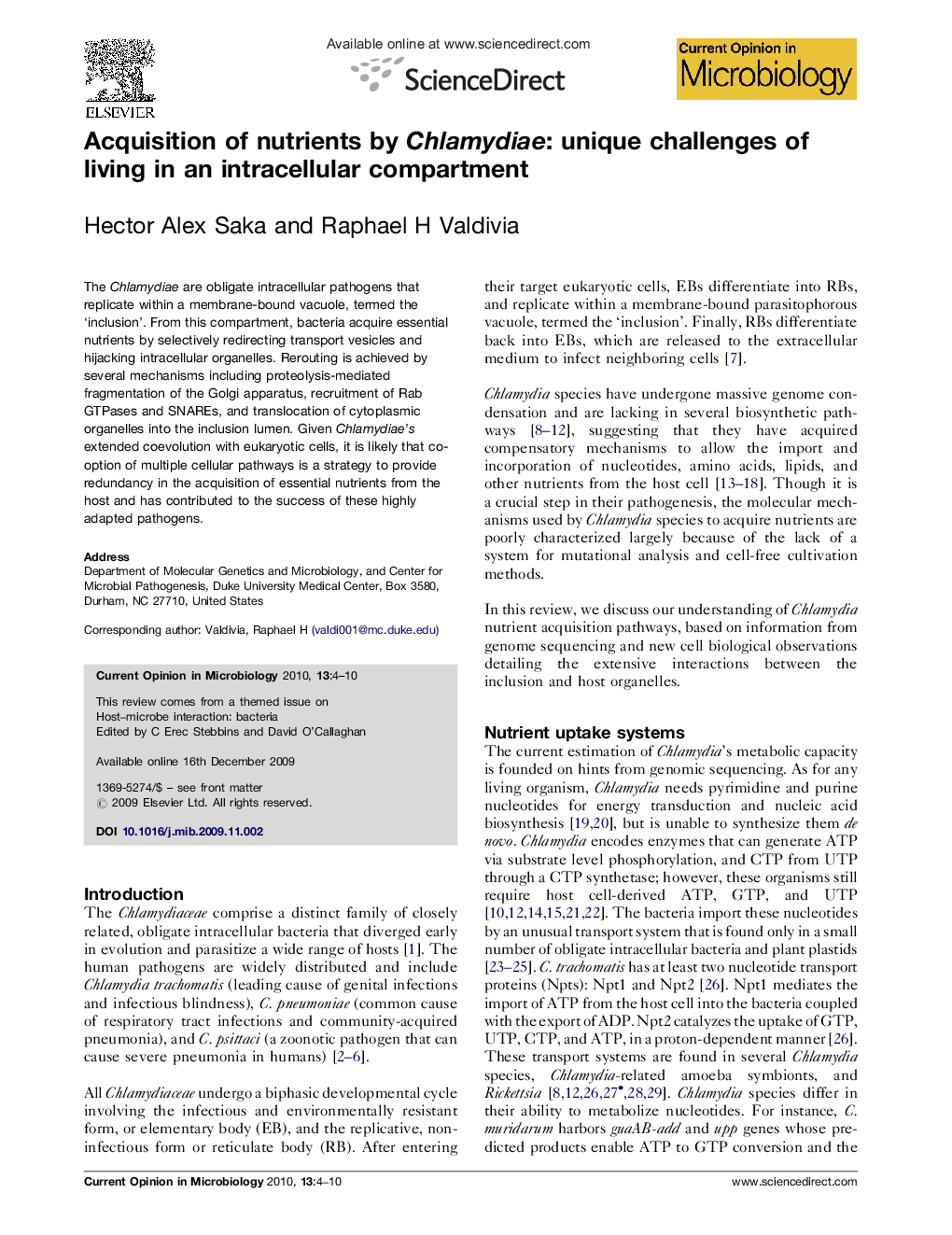| Article ID | Journal | Published Year | Pages | File Type |
|---|---|---|---|---|
| 3399389 | Current Opinion in Microbiology | 2010 | 7 Pages |
The Chlamydiae are obligate intracellular pathogens that replicate within a membrane-bound vacuole, termed the ‘inclusion’. From this compartment, bacteria acquire essential nutrients by selectively redirecting transport vesicles and hijacking intracellular organelles. Rerouting is achieved by several mechanisms including proteolysis-mediated fragmentation of the Golgi apparatus, recruitment of Rab GTPases and SNAREs, and translocation of cytoplasmic organelles into the inclusion lumen. Given Chlamydiae's extended coevolution with eukaryotic cells, it is likely that co-option of multiple cellular pathways is a strategy to provide redundancy in the acquisition of essential nutrients from the host and has contributed to the success of these highly adapted pathogens.
